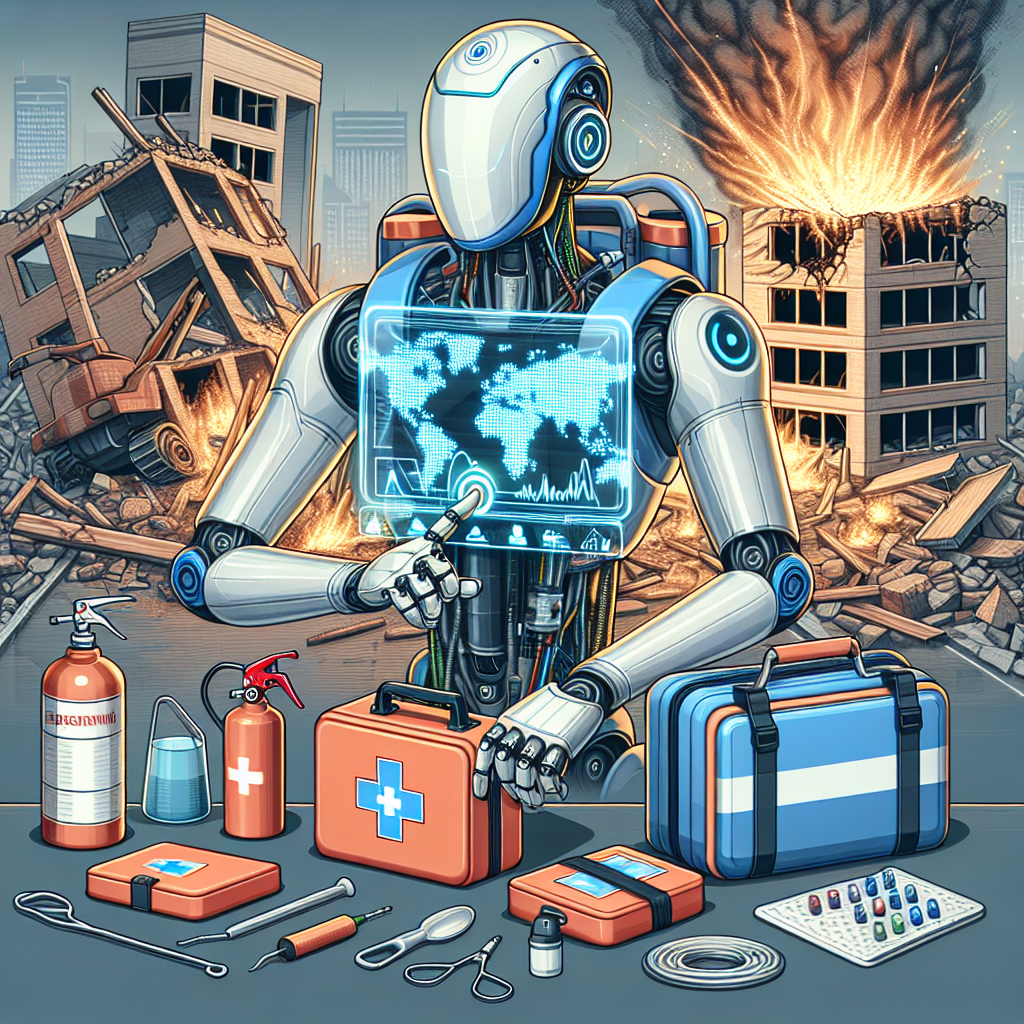The Role of AI Integration in Disaster Response
Introduction
Disasters, whether natural or man-made, can have devastating effects on communities and individuals. From earthquakes and hurricanes to pandemics and terrorist attacks, the need for effective disaster response is crucial in order to mitigate the impact and save lives. In recent years, there has been a growing interest in the use of artificial intelligence (AI) technology to improve disaster response efforts. AI has the potential to revolutionize the way we prepare for, respond to, and recover from disasters by providing real-time data analysis, predictive modeling, and decision-making support. In this article, we will explore the role of AI integration in disaster response and its potential benefits.
Benefits of AI Integration in Disaster Response
1. Real-time Data Analysis: One of the key benefits of AI integration in disaster response is its ability to analyze vast amounts of data in real-time. AI algorithms can process information from various sources such as satellite imagery, social media feeds, and sensor networks to provide valuable insights to first responders. This data analysis can help identify areas of high risk, track the movement of a disaster, and assess the impact on infrastructure and populations.
2. Predictive Modeling: AI technology can also be used to develop predictive models that can forecast the potential impact of a disaster and identify the most effective response strategies. By analyzing historical data and current conditions, AI algorithms can predict the spread of a wildfire, the path of a hurricane, or the outbreak of a disease. This information can help emergency services plan and allocate resources more effectively, saving time and lives.
3. Decision-making Support: In the chaotic and high-stress environment of a disaster, decision-making can be challenging. AI integration can provide decision-making support by analyzing data, identifying patterns, and recommending the best course of action. For example, AI algorithms can suggest evacuation routes, prioritize rescue operations, or allocate medical supplies based on real-time information. This can help first responders make more informed decisions quickly and efficiently.
4. Communication and Coordination: Effective communication and coordination are essential in disaster response efforts. AI technology can facilitate communication between different agencies, organizations, and individuals by providing a centralized platform for information sharing. AI-powered chatbots can answer common questions, provide updates, and connect people with the resources they need. This can streamline communication and ensure that everyone is on the same page during a crisis.
5. Remote Monitoring: In some disaster scenarios, it may be unsafe or impossible for humans to access certain areas. AI integration can enable remote monitoring through drones, robots, and sensors to gather information and assess the situation. Drones equipped with AI technology can survey damage, deliver supplies, and even perform search and rescue operations. This remote monitoring capability can help first responders assess the extent of the disaster and plan their response accordingly.
FAQs
Q: How can AI technology be integrated into existing disaster response systems?
A: AI technology can be integrated into existing disaster response systems through the use of specialized software applications, data analytics platforms, and communication tools. These tools can be customized to meet the specific needs of a particular disaster scenario and can be accessed by first responders, emergency services, and other stakeholders in real-time.
Q: What are some examples of AI applications in disaster response?
A: Some examples of AI applications in disaster response include predictive modeling for hurricanes, wildfires, and pandemics; real-time data analysis for earthquake detection and response; decision-making support for evacuation planning and resource allocation; communication and coordination tools for information sharing and collaboration; and remote monitoring through drones, robots, and sensors.
Q: What are the limitations of AI integration in disaster response?
A: While AI technology has the potential to greatly improve disaster response efforts, there are some limitations to consider. These include the need for reliable data sources, the potential for algorithm bias, the risk of technological failures, and the challenge of integrating AI systems with existing infrastructure. It is important to address these limitations and consider them when implementing AI technology in disaster response.
Conclusion
The integration of AI technology in disaster response has the potential to revolutionize the way we prepare for, respond to, and recover from disasters. By providing real-time data analysis, predictive modeling, decision-making support, communication tools, and remote monitoring capabilities, AI can help first responders and emergency services save lives and minimize the impact of disasters on communities. While there are limitations to consider, the benefits of AI integration in disaster response are clear. As technology continues to advance, it is essential that we leverage the power of AI to improve our resilience in the face of disasters.

